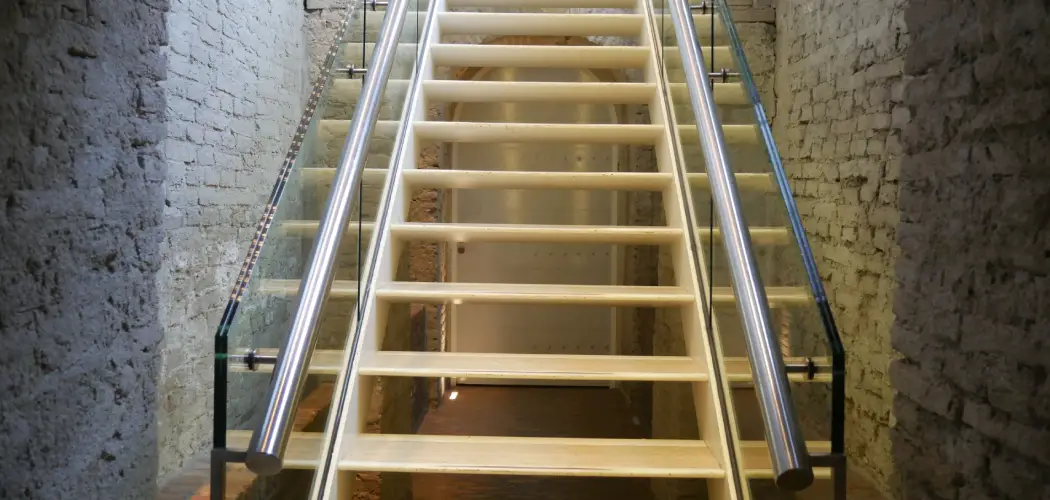Are you considering installing a stair railing in your basement? If so, you’re not alone! With the growing popularity of open floor plans and more emphasis on safety, there’s no doubt that adding a stair railing is a great way to make your home safer and even more attractive. But if this isn’t something you’ve done before, it can be difficult to know where to start. So let us take out the guesswork with our step-by-step guide on how to install a basement stair railing. Let’s get started!
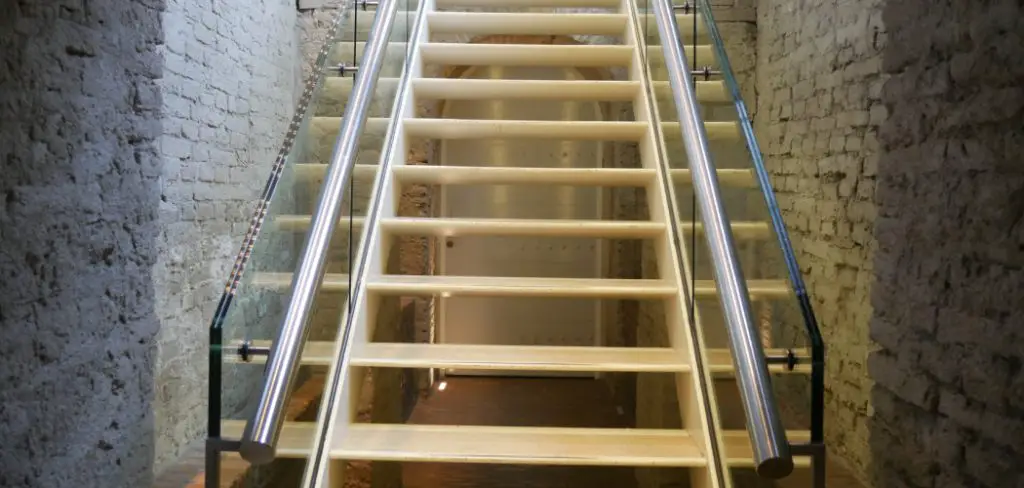
Installing a stair railing is the perfect way to safeguard your loved ones from falls while adding an elegant touch to your home. Although this task may seem intimidating, we will walk you step-by-step through the installation process so that you can feel confident tackling this project on your own.
From identifying essential materials needed, understanding what tools are best suited for the job, following safety protocols and properly securing each piece – we’ll be breaking down everything.
Why May You Want to Install a Basement Stair Railing?
1 . To Ensure Safety
Installing a basement stair railing is essential for the safety of your home and family. Without a proper railing, accidents can occur, especially when navigating stairs in the dark or carrying heavy objects up and down. A sturdy railing provides support and stability, preventing falls or slips.
2 . To Meet Building Codes
In many areas, it is required by building codes to have a basement stair railing installed. This is to ensure the safety and accessibility of your home, as well as to meet certain standards for construction and renovation. Failure to comply with these codes can result in penalties or difficulties when selling your home.
3 . To Add Value to Your Home
Installing a basement stair railing can also add value to your home. It not only improves safety and meets building codes, but it also enhances the overall appearance of your stairs. A well-designed and properly installed railing can make a positive impression on potential buyers, increasing the value of your property.
4 . To Create an Aesthetic Appeal
A basement stair railing is not just for practical purposes; it can also enhance the aesthetic appeal of your home. With various materials and designs to choose from, you can customize the railing to complement your home’s interior design. This can add character and charm to an otherwise plain and utilitarian area.
5 . To Protect Your Basement
A basement stair railing also serves as a barrier between your living space and the potentially hazardous basement area. It prevents accidental falls into the basement or any unwanted access by children or pets. This added layer of protection can give you peace of mind and prevent any potential accidents.
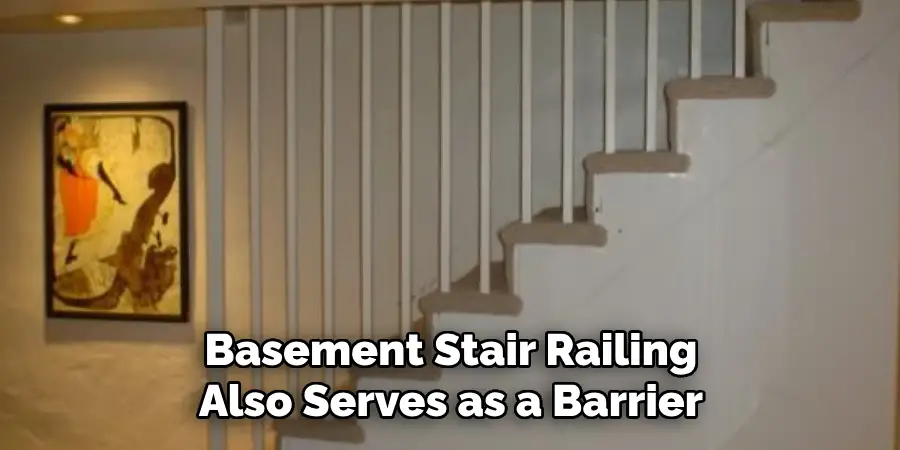
Steps for How to Install a Basement Stair Railing
Now that you understand the benefits of installing a basement stair railing, here are the general steps to follow when installing one:
Step 1: Measure and Plan
Measure the length of your stairs and determine the height and angle at which the railing will be installed. This will help you determine the appropriate amount of materials needed for your project.
Step 2: Gather Materials
Depending on your design preference, you will need to gather materials such as a handrail, balusters, newel posts, screws, and a drill. Also, make sure to have safety gear such as gloves and eyewear.
Step 3: Prepare the Area
Remove any existing railing or debris from the stairs. Make sure the area is clean and free of any obstacles that may hinder installation. Also, ensure the stair treads and risers are securely attached to the stairs.
Step 4: Install Balusters
Attach balusters to the staircase using a drill and screws. Make sure they are evenly spaced and secure. This will provide stability and support for the handrail.
Step 5: Install Handrail
Attach the handrail to the newel posts using screws. Make sure it is level and securely attached to both the posts and balusters. This will provide a sturdy grip when navigating the stairs. Also, make sure the handrail extends past the top and bottom steps for added safety.
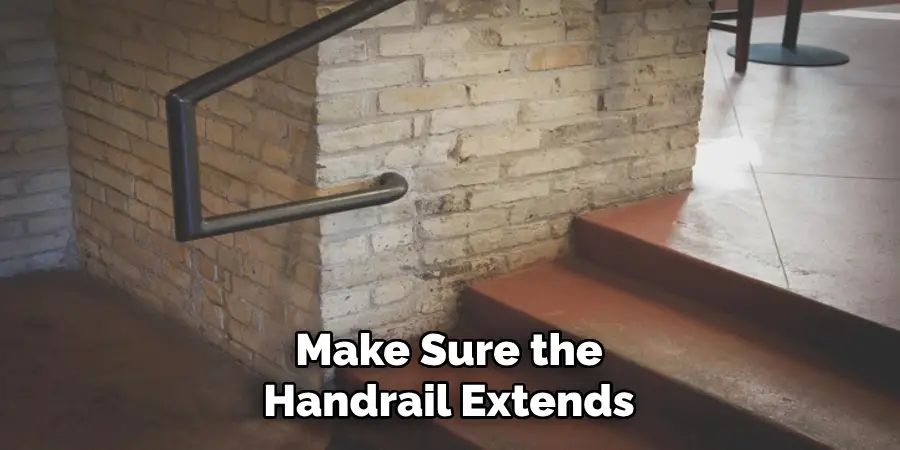
Some Extra Tips to Install a Basement Stair Railing
1 . Do Not Overlook the Building Codes
Before beginning the installation process, it is important to check with your local building codes and regulations. These codes ensure that your basement stair railing meets safety standards and does not pose a hazard to anyone using the staircase.
2 . Plan Out Your Railing Design
Take some time to decide on the design of your basement stair railing. Consider factors such as the overall style and aesthetic of your basement, as well as the functionality and safety aspects. This planning process will help make the installation smoother and ensure that you are satisfied with the end result.
3 . Gather All Necessary Materials
Make a list of all the materials needed for the installation, including tools like a drill, screws, measuring tape, etc. Ensure that you have all the necessary items before starting to avoid any delays or interruptions during the installation process.
4 . Measure Accurately
Measuring accurately is key for a successful installation. Take multiple measurements and double check them to ensure precision. Remember, it’s always better to cut your railing slightly longer as you can always trim it down later if needed.
5 . Safety First
Always prioritize safety during the installation process. Wear protective gear, use caution when handling tools, and have someone assist you if needed. It’s also a good idea to cover your stairs with a drop cloth or tarp to prevent any accidents or damage.
6 . Test Your Railing Before Securing it
Before securing your railing in its final position, do a test run to ensure that everything fits properly and securely. Adjust and make any necessary changes before proceeding with the final installation.
7 . Consider Hiring a Professional
If you are not confident in your ability to install the basement stair railing yourself, or if the project seems too daunting, consider hiring a professional. They have the knowledge and expertise to ensure a safe and proper installation.
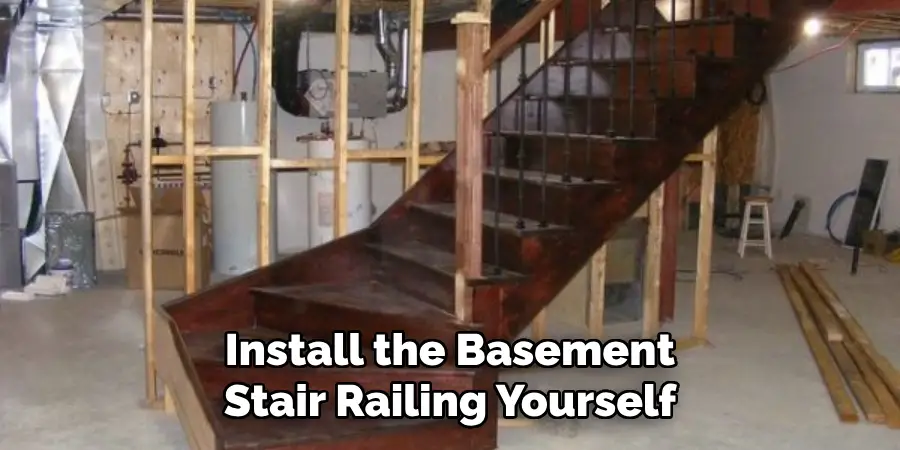
Frequently Asked Questions
What Precautions Should I Take Before Installing a Basement Stair Railing?
Before installing a basement stair railing, there are a few precautions that you should take to ensure the safety and success of your project. First, make sure that your stairs are structurally sound and able to support the weight of the railing. If you have any doubts, it may be wise to consult a professional contractor or engineer.
Additionally, check with your local building codes to ensure that you are following all necessary regulations and obtaining any required permits. Finally, make sure to have all the necessary tools and materials on hand before beginning the installation process.
What Tools and Materials Will I Need?
The specific tools and materials needed may vary depending on the type of basement stair railing you are installing. However, some common items you may need include a drill, screws, a level, measuring tape, and a saw. You will also likely need the railing itself, as well as any necessary brackets or fittings.
How Do I Measure for the Railing?
To determine the length of your basement stair railing, you will first need to measure the distance between the top and bottom of your stairs. Then, add an additional 2-3 inches to this measurement to allow for overhang on each end. If your stairs are not straight, you may need to adjust your measurements accordingly.
What Are Some Tips for Installing the Railing?
When installing a basement stair railing, it is important to securely attach the brackets or fittings to both the stairs and the wall. The railing itself should also be securely attached to the brackets or fittings, ensuring a sturdy and safe installation. Additionally, make sure to use a level during the installation process to ensure that your railing is straight and aligned correctly.
Can I Install the Railing Myself?
While it is possible to install a basement stair railing yourself, it may be best to seek professional help if you are unsure of your abilities or lack the necessary tools and experience. Improperly installed railings can be dangerous and may not meet building code requirements, so it is important to prioritize safety and accuracy during the installation process.
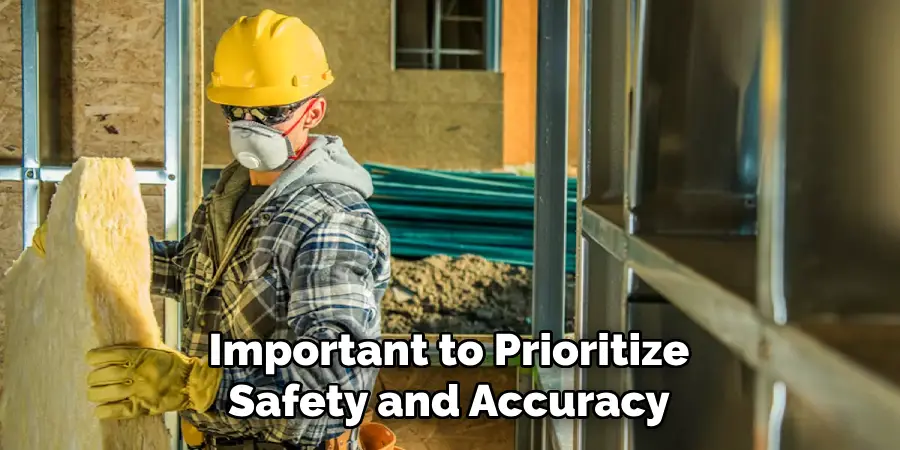
Conclusion
In conclusion, installing a basement stair railing is a great way to add hard-wearing and aesthetically pleasing decoration to your home. By following the steps outlined in this blog post, you will be sure to create a lasting, safe and attractive space for you and your guests. Don’t forget to double-check your measurements and get creative with the decorations as you go!
Now you know how to install a basement stair railing! By investing the right amount of time and effort into properly installing your basement stair railing, you can be proud of the outcome for years to come. So why not start today? Get out those tools and take that first bold step toward new possibilities in home decoration!

